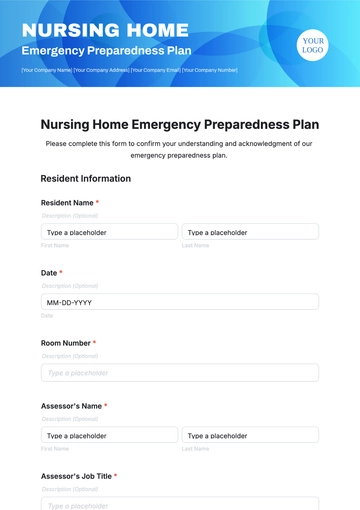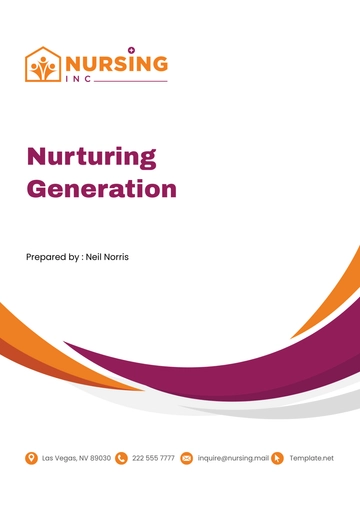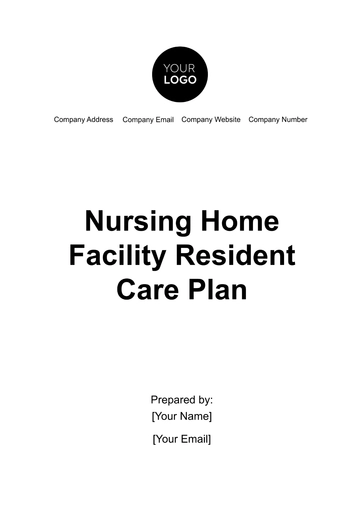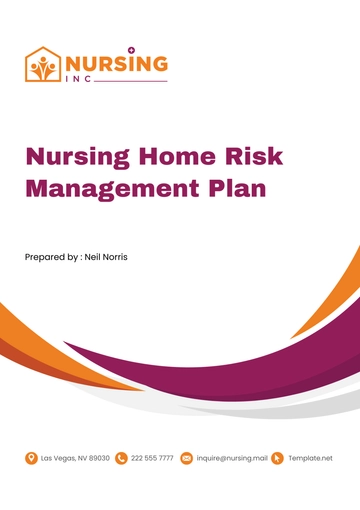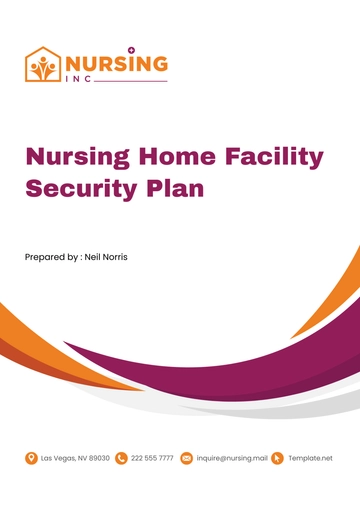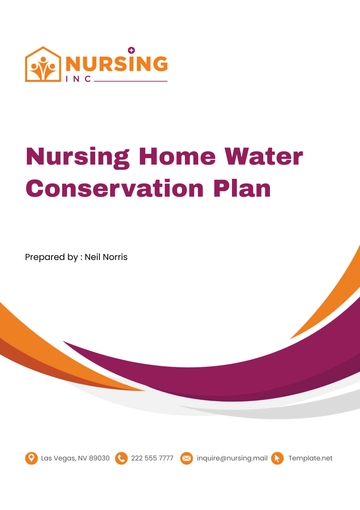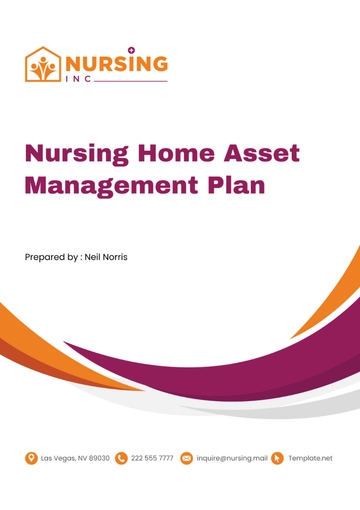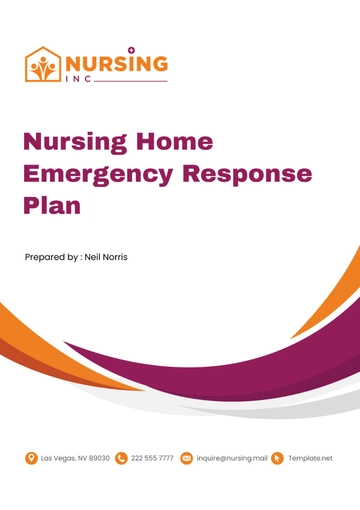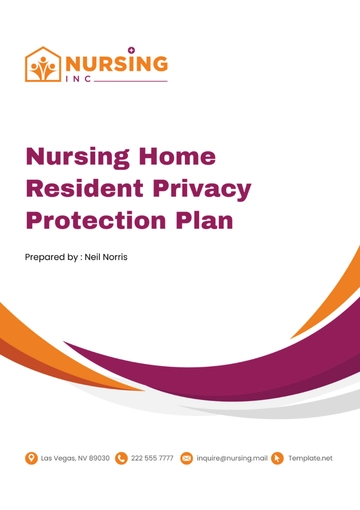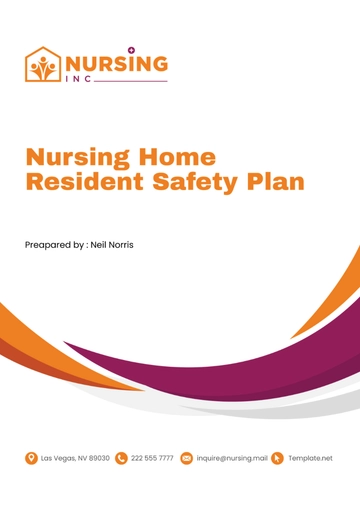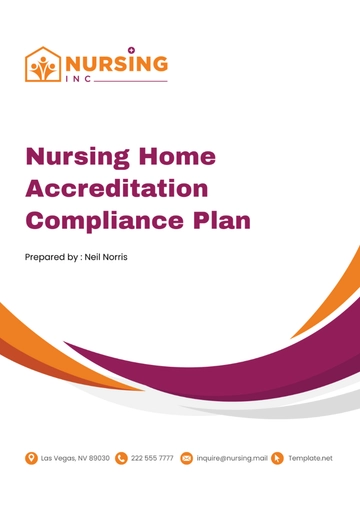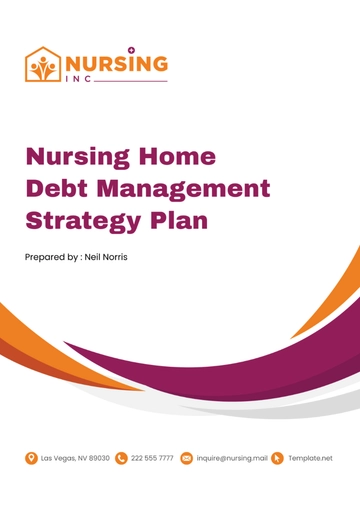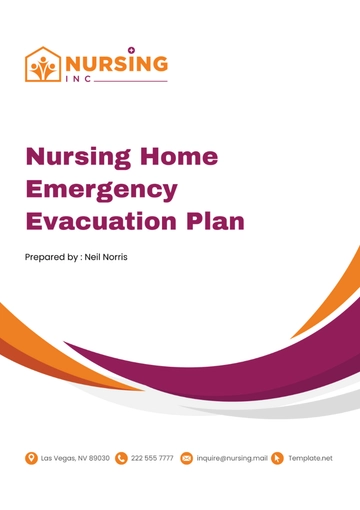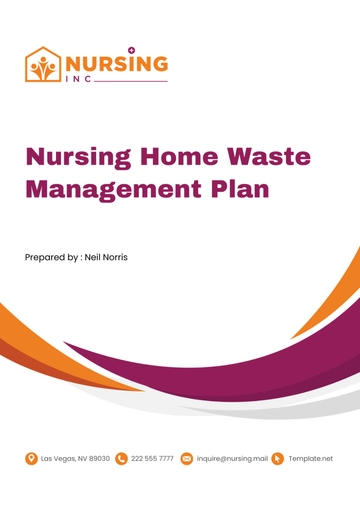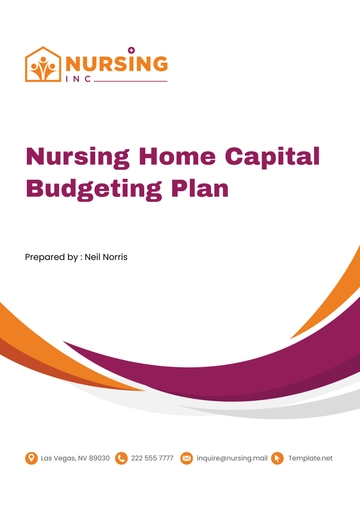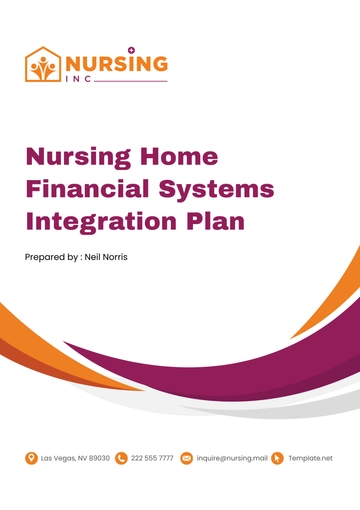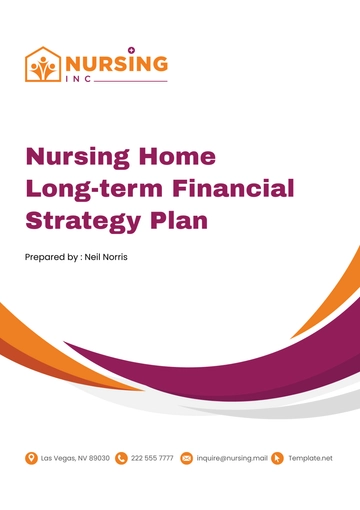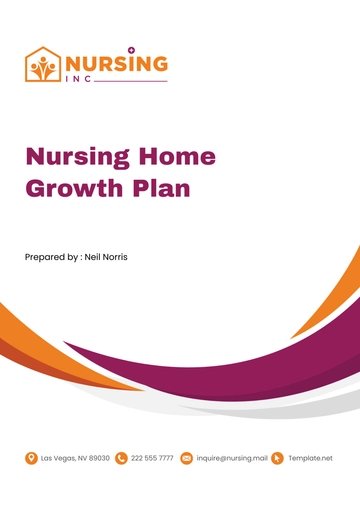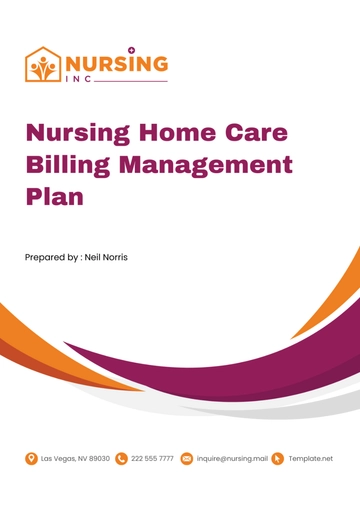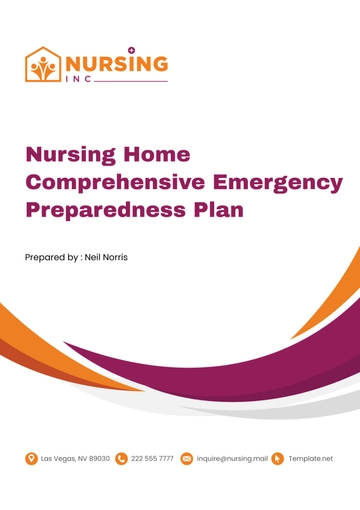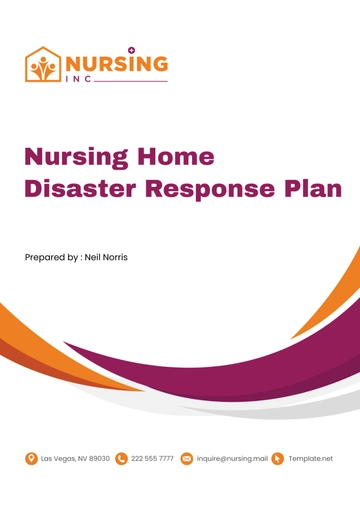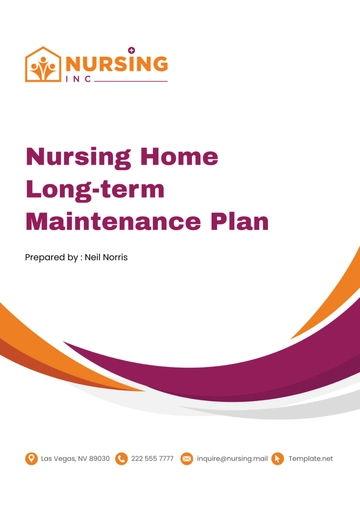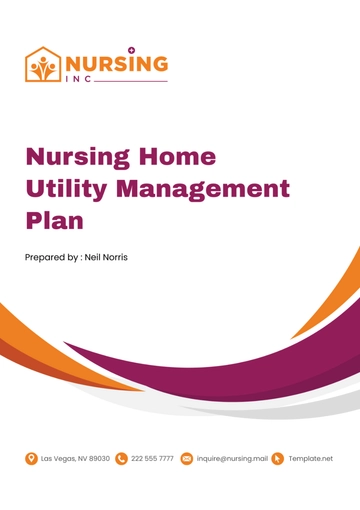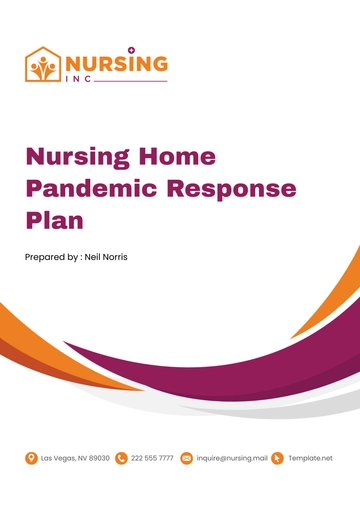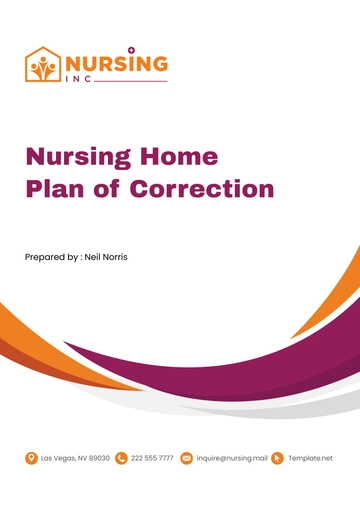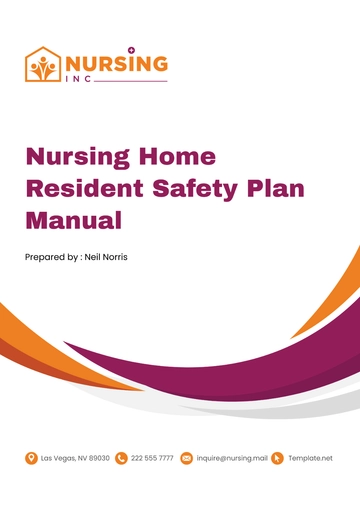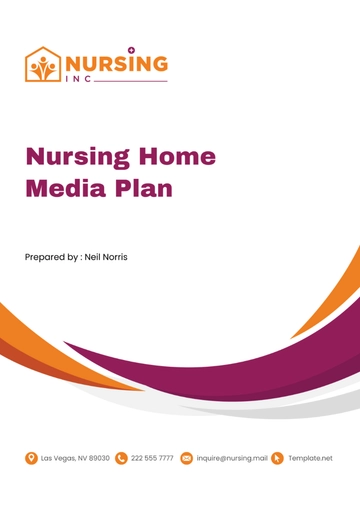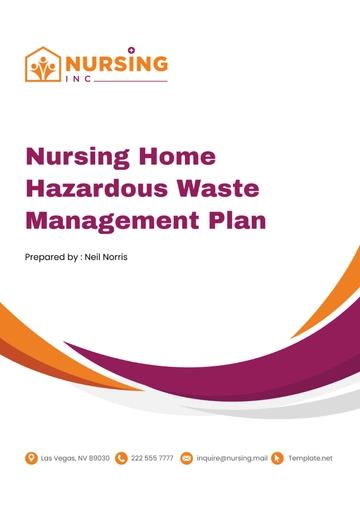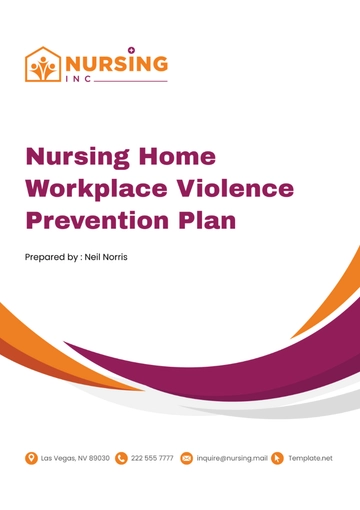Free Nursing Home Debt Management Strategy Plan
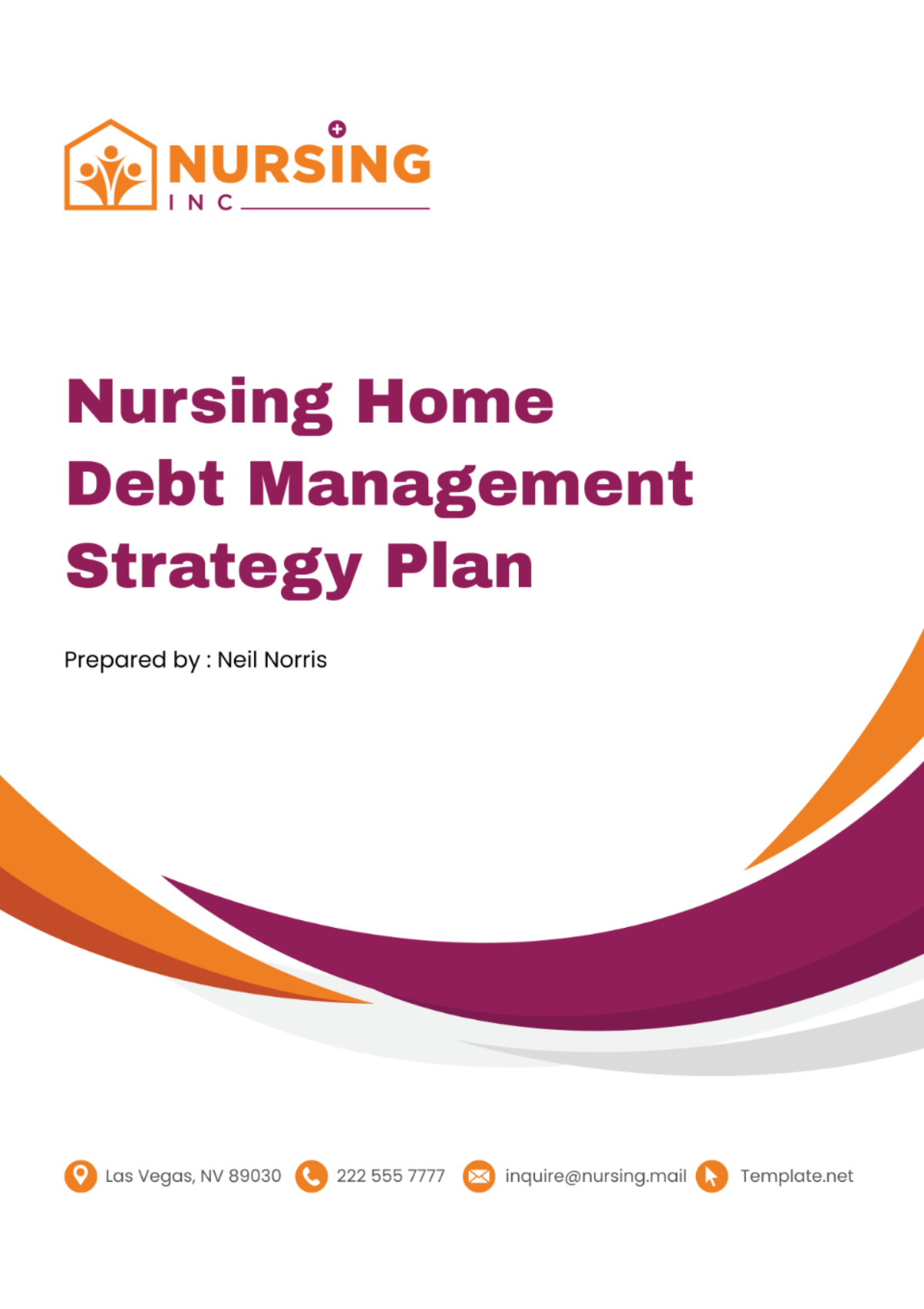
I. Executive Summary
A. Introduction
[Your Company Name] acknowledges the increasing complexity of financial management within the nursing home sector. As the landscape of healthcare financing undergoes continuous evolution, nursing homes encounter unique challenges in maintaining financial stability while upholding high standards of care for residents. This Debt Management Strategy Plan is tailored to address these challenges by providing a comprehensive framework for effective debt management, ensuring the long-term viability and financial health of our nursing home facilities.
B. Objectives
Reduce overall debt burden by 20% within the next three years through the implementation of strategic debt management practices and proactive financial restructuring initiatives.
Enhance cash flow management to ensure the timely payment of debts and operational expenses, thereby maintaining financial liquidity and stability.
Improve creditworthiness and financial credibility to secure favorable financing terms, support future growth initiatives, and mitigate financial risks.
C. Key Strategies
Implementing stringent budgetary controls to optimize resource allocation, minimize unnecessary expenditures, and foster a culture of fiscal responsibility across all departments.
Exploring debt restructuring options, including refinancing, debt consolidation, and renegotiation of terms with lenders, to optimize debt servicing costs and improve cash flow flexibility.
Maximizing revenue generation avenues through the enhancement of billing and collection processes, expansion of service offerings, and strategic partnerships with healthcare providers and payers.
Enhancing operational efficiency through the implementation of process improvement initiatives, investment in technology solutions, and workforce development programs aimed at reducing costs and enhancing productivity.
II. Current Debt Analysis
A. Overview of Current Debt
Type of Debt | Amount Outstanding ($) |
|---|---|
Loans | $3,500,000 |
Bonds | $1,200,000 |
Lines of Credit | $300,000 |
Total | $5,000,000 |
Loans:
Description: These are long-term loans obtained to finance capital investments, facility expansions, or equipment acquisitions.
Amount Outstanding: $3,500,000
Terms: Variable interest rate of [4.5%], with a remaining term of [10] years.
Purpose: Used for the construction of [Name of Nursing Home Wing] and the purchase of medical equipment.
Bonds:
Description: These are municipal bonds issued to raise funds for specific projects or operational expenses.
Amount Outstanding: $1,200,000
Terms: Fixed interest rate of [3.75%], with a remaining term of [15] years.
Purpose: Issued to finance renovations and upgrades to [Name of Nursing Home] facilities.
Lines of Credit:
Description: These are revolving lines of credit extended by financial institutions to provide short-term financing for working capital needs.
Amount Outstanding: $300,000
Terms: Variable interest rate based on LIBOR, with a maximum credit limit of [$500,000].
Purpose: Utilized for day-to-day operational expenses, payroll, and inventory purchases.
B. Debt Service Analysis
Monthly Debt Service Obligations:
Total Principal and Interest Payments: $100,000
Breakdown:
Loans: $70,000
Bonds: $25,000
Lines of Credit: $5,000
Debt Service Coverage Ratio (DSCR):
Calculation: DSCR = Net Operating Income / Total Debt Service
Interpretation:
A DSCR of 1.5x indicates that the nursing home's net operating income is 1.5 times higher than its total debt service obligations.
This signifies a healthy financial position, with sufficient cash flow to cover debt payments and support ongoing operations.
Future Considerations:
Monitoring the DSCR regularly to ensure it remains above 1.0x, indicating sufficient cash flow to meet debt obligations.
Taking proactive measures to increase net operating income, such as revenue enhancement strategies and cost-saving initiatives, to strengthen the DSCR further.
III. Debt Management Strategies
A. Budgetary Controls
Implementing Monthly Budget Reviews:
Description: Conduct monthly reviews of expenses to identify areas for cost reduction and ensure adherence to budgetary targets.
Responsible Department: Finance
Action Steps:
Review departmental budgets and actual expenses.
Identify variances and areas of overspending.
Collaborate with department heads to develop corrective action plans.
Monitor implementation of cost-saving measures and track progress.
Establishing Spending Limits:
Description: Set spending limits for each department based on budget allocations and financial projections.
Responsible Department: Finance
Action Steps:
Define spending limits for personnel, supplies, and other operational expenses.
Communicate spending guidelines to department managers.
Provide training on budget management and expenditure tracking.
Monitor spending against established limits and intervene as needed to ensure compliance.
Conducting Regular Audits:
Description: Conduct periodic audits to evaluate compliance with budgetary controls and identify opportunities for improvement.
Responsible Department: Internal Audit
Action Steps:
Develop audit protocols and schedules for each department.
Conduct comprehensive reviews of financial records and expenditure reports.
Identify instances of non-compliance or inefficiency.
Make recommendations for process improvements and corrective actions.
B. Debt Restructuring
Exploring Refinancing Options:
Description: Investigate opportunities to refinance existing debt at lower interest rates to reduce overall debt servicing costs.
Responsible Department: Finance
Action Steps:
Assess current debt obligations and interest rates.
Research refinancing options available in the market.
Analyze potential savings and feasibility of refinancing.
Initiate discussions with lenders to negotiate favorable terms.
Investigating Debt Consolidation:
Description: Evaluate the feasibility of consolidating multiple debts into a single loan to simplify repayment and potentially lower interest expenses.
Responsible Department: Finance
Action Steps:
Compile a list of all outstanding debts and their terms.
Assess the advantages and disadvantages of debt consolidation.
Engage with financial advisors or debt consolidation firms for guidance.
Develop a consolidation plan and seek approval from stakeholders.
Negotiating Revised Terms with Lenders:
Description: Engage in negotiations with lenders to renegotiate repayment terms, extend maturity dates, or adjust interest rates to improve cash flow flexibility.
Responsible Department: Finance
Action Steps:
Gather relevant financial data and performance metrics.
Prepare a negotiation strategy and proposal.
Initiate discussions with lenders to explore possible modifications.
Reach mutually beneficial agreements and formalize revised terms in writing.
C. Revenue Maximization
Enhancing Billing and Collection Processes:
Description: Improve billing accuracy and timeliness to minimize revenue leakage and accelerate cash inflows.
Responsible Department: Revenue Cycle Management
Action Steps:
Review current billing and collection procedures.
Identify bottlenecks and areas for improvement.
Implement automated billing systems and software upgrades.
Train staff on proper coding, documentation, and billing practices.
Expanding Service Offerings:
Description: Explore opportunities to expand service offerings and attract new residents to increase occupancy rates and revenue streams.
Responsible Department: Marketing and Business Development
Action Steps:
Conduct market research to identify unmet needs and demand for additional services.
Develop new service packages or amenities tailored to target demographics.
Launch marketing campaigns to promote new services and attract potential residents.
Monitor occupancy rates and revenue growth to assess the impact of service expansion.
D. Operational Efficiency
Conducting Comprehensive Operational Assessments:
Description: Evaluate current operational processes and workflows to identify inefficiencies and areas for improvement.
Responsible Department: Operations Management
Action Steps:
Form a cross-functional team to conduct operational assessments.
Document current processes and workflows.
Analyze performance metrics and benchmark against industry standards.
Identify opportunities for streamlining and optimization.
Investing in Technology Solutions:
Description: Deploy technology solutions and automation tools to streamline administrative processes, reduce manual tasks, and improve productivity.
Responsible Department: Information Technology (IT)
Action Steps:
Assess existing technology infrastructure and capabilities.
Research and evaluate potential software solutions and automation tools.
Develop implementation plans and timelines.
Provide training and support to staff on new technology systems.
IV. Implementation Plan
A. Timeline
Phase | Activities | Timeline |
|---|---|---|
Phase 1 | Budgetary Controls Implementation | Months 1-3 |
Phase 2 | Debt Restructuring Initiatives | Months 4-6 |
Phase 3 | Revenue Maximization Strategies | Months 7-12 |
Phase 4 | Operational Efficiency Enhancements | Months 13-18 |
B. Responsibilities
Department | Tasks |
|---|---|
Finance | Lead budgetary control implementation, debt restructuring, and financial analysis. |
Internal Audit | Conduct regular audits to evaluate compliance with budgetary controls. |
Revenue Cycle Management | Improve billing accuracy and timeliness to minimize revenue leakage. |
Marketing and Business Development | Explore opportunities to expand service offerings and attract new residents. |
Operations Management | Conduct operational assessments and identify areas for improvement. |
Information Technology | Deploy technology solutions to streamline administrative processes. |
C. Monitoring and Evaluation
Establishing Key Performance Indicators (KPIs) to track progress and measure the effectiveness of implemented strategies.
Conducting regular reviews and assessments to evaluate performance against established targets.
Making adjustments to the plan as needed based on performance outcomes and changing market conditions.
V. Conclusion
[Your Company Name] is committed to the successful implementation of this Debt Management Strategy Plan for nursing homes. By following the outlined strategies and action plans, we aim to achieve our objectives of reducing debt burden, enhancing cash flow management, and improving overall financial health. Through diligent budgetary controls, proactive debt restructuring efforts, revenue maximization initiatives, and operational efficiency enhancements, we are confident in our ability to overcome financial challenges and ensure the long-term sustainability of our nursing home facilities. We remain dedicated to providing high-quality care to our residents while maintaining financial stability and credibility within the healthcare industry.
VI. Appendices
A. Key Performance Indicators (KPIs)
KPI | Measurement | Target |
|---|---|---|
Debt-to-Equity Ratio | Total Debt / Equity | < 2.0x |
Days Sales Outstanding (DSO) | (Accounts Receivable / Total Credit Sales) * Number of Days | < 45 days |
Occupancy Rate | (Number of Occupied Beds / Total Beds) * 100 | > 90% |
Operating Margin | (Operating Income / Total Revenue) * 100 | > 10% |
B. Risk Management Plan
Risk | Impact | Mitigation Strategy |
|---|---|---|
Economic Downturn | High | Diversify revenue streams, maintain strong cash reserves |
Regulatory Changes | Medium | Stay updated on regulatory requirements, adapt policies |
Competition from Other Providers | Medium | Enhance service offerings, focus on quality of care |
Interest Rate Fluctuations | High | Implement interest rate hedging strategies |
C. Stakeholder Communication Plan
Stakeholder | Communication Objective | Frequency | Method |
|---|---|---|---|
Board of Directors | Provide updates on financial performance and strategy | Quarterly | Board meetings |
Employees | Share progress on debt management initiatives | Monthly | Staff meetings |
Residents & Families | Inform about any changes in services or facilities | As needed | Newsletters, meetings |
Lenders & Creditors | Communicate about debt restructuring efforts and financial health | Biannually | Meetings, reports |
D. Training and Development Plan
Training Topic | Target Audience | Frequency | Method |
|---|---|---|---|
Budget Management | Department Managers | Annually | Workshops, webinars |
Debt Management Strategies | Finance Department | Semi-annually | Training sessions |
Revenue Cycle Optimization | Billing Staff | Quarterly | Online modules, on-the-job training |
- 100% Customizable, free editor
- Access 1 Million+ Templates, photo’s & graphics
- Download or share as a template
- Click and replace photos, graphics, text, backgrounds
- Resize, crop, AI write & more
- Access advanced editor
Manage debts effectively with the Nursing Home Debt Management Strategy Plan Template from Template.net. Editable and customizable, it outlines strategies for handling and reducing debts in nursing home finances. Tailor it effortlessly using our Ai Editor Tool for personalized plans. Ensure financial stability and sustainability with this essential template.
You may also like
- Finance Plan
- Construction Plan
- Sales Plan
- Development Plan
- Career Plan
- Budget Plan
- HR Plan
- Education Plan
- Transition Plan
- Work Plan
- Training Plan
- Communication Plan
- Operation Plan
- Health And Safety Plan
- Strategy Plan
- Professional Development Plan
- Advertising Plan
- Risk Management Plan
- Restaurant Plan
- School Plan
- Nursing Home Patient Care Plan
- Nursing Care Plan
- Plan Event
- Startup Plan
- Social Media Plan
- Staffing Plan
- Annual Plan
- Content Plan
- Payment Plan
- Implementation Plan
- Hotel Plan
- Workout Plan
- Accounting Plan
- Campaign Plan
- Essay Plan
- 30 60 90 Day Plan
- Research Plan
- Recruitment Plan
- 90 Day Plan
- Quarterly Plan
- Emergency Plan
- 5 Year Plan
- Gym Plan
- Personal Plan
- IT and Software Plan
- Treatment Plan
- Real Estate Plan
- Law Firm Plan
- Healthcare Plan
- Improvement Plan
- Media Plan
- 5 Year Business Plan
- Learning Plan
- Marketing Campaign Plan
- Travel Agency Plan
- Cleaning Services Plan
- Interior Design Plan
- Performance Plan
- PR Plan
- Birth Plan
- Life Plan
- SEO Plan
- Disaster Recovery Plan
- Continuity Plan
- Launch Plan
- Legal Plan
- Behavior Plan
- Performance Improvement Plan
- Salon Plan
- Security Plan
- Security Management Plan
- Employee Development Plan
- Quality Plan
- Service Improvement Plan
- Growth Plan
- Incident Response Plan
- Basketball Plan
- Emergency Action Plan
- Product Launch Plan
- Spa Plan
- Employee Training Plan
- Data Analysis Plan
- Employee Action Plan
- Territory Plan
- Audit Plan
- Classroom Plan
- Activity Plan
- Parenting Plan
- Care Plan
- Project Execution Plan
- Exercise Plan
- Internship Plan
- Software Development Plan
- Continuous Improvement Plan
- Leave Plan
- 90 Day Sales Plan
- Advertising Agency Plan
- Employee Transition Plan
- Smart Action Plan
- Workplace Safety Plan
- Behavior Change Plan
- Contingency Plan
- Continuity of Operations Plan
- Health Plan
- Quality Control Plan
- Self Plan
- Sports Development Plan
- Change Management Plan
- Ecommerce Plan
- Personal Financial Plan
- Process Improvement Plan
- 30-60-90 Day Sales Plan
- Crisis Management Plan
- Engagement Plan
- Execution Plan
- Pandemic Plan
- Quality Assurance Plan
- Service Continuity Plan
- Agile Project Plan
- Fundraising Plan
- Job Transition Plan
- Asset Maintenance Plan
- Maintenance Plan
- Software Test Plan
- Staff Training and Development Plan
- 3 Year Plan
- Brand Activation Plan
- Release Plan
- Resource Plan
- Risk Mitigation Plan
- Teacher Plan
- 30 60 90 Day Plan for New Manager
- Food Safety Plan
- Food Truck Plan
- Hiring Plan
- Quality Management Plan
- Wellness Plan
- Behavior Intervention Plan
- Bonus Plan
- Investment Plan
- Maternity Leave Plan
- Pandemic Response Plan
- Succession Planning
- Coaching Plan
- Configuration Management Plan
- Remote Work Plan
- Self Care Plan
- Teaching Plan
- 100-Day Plan
- HACCP Plan
- Student Plan
- Sustainability Plan
- 30 60 90 Day Plan for Interview
- Access Plan
- Site Specific Safety Plan
